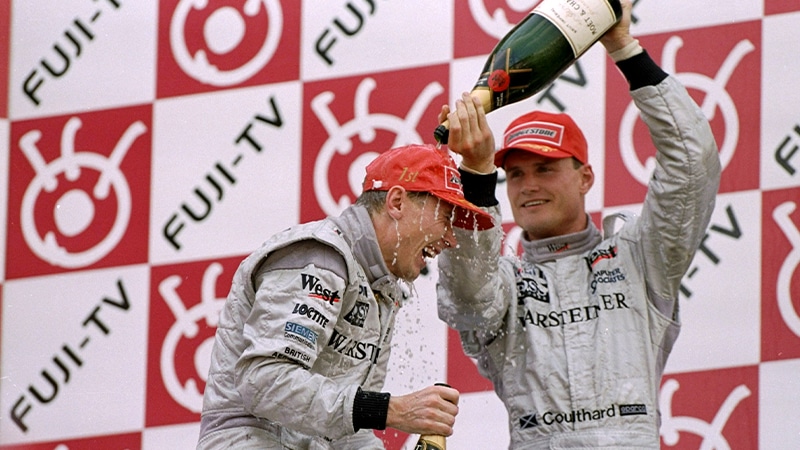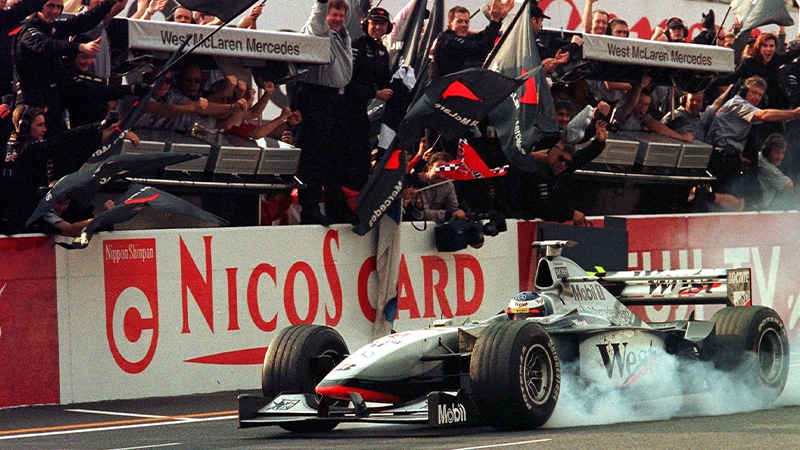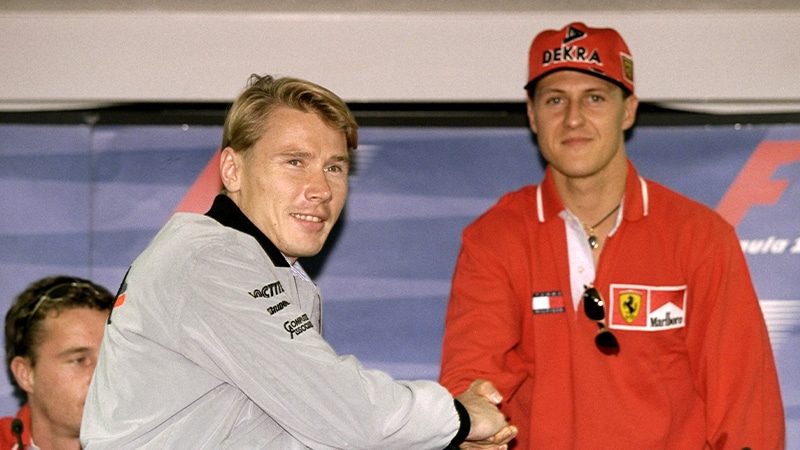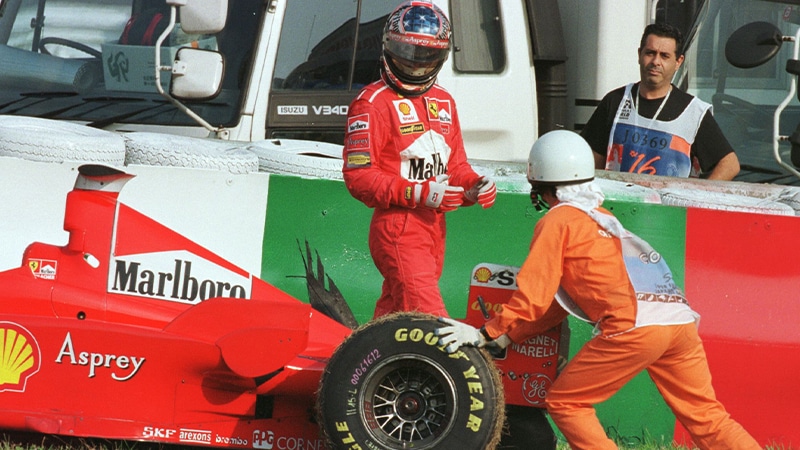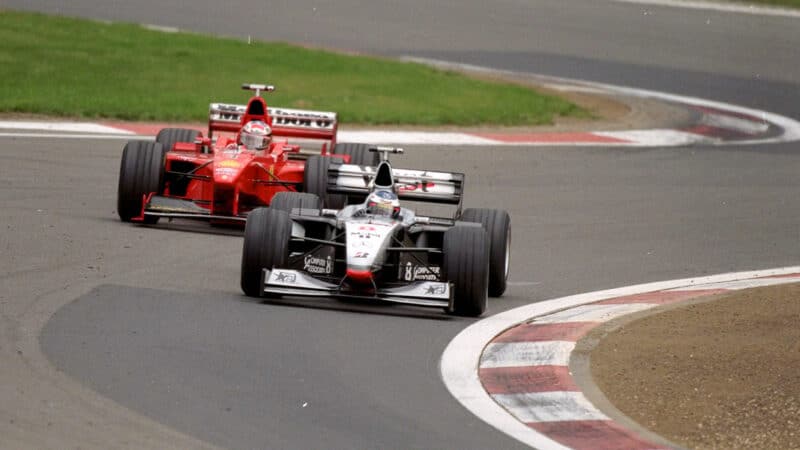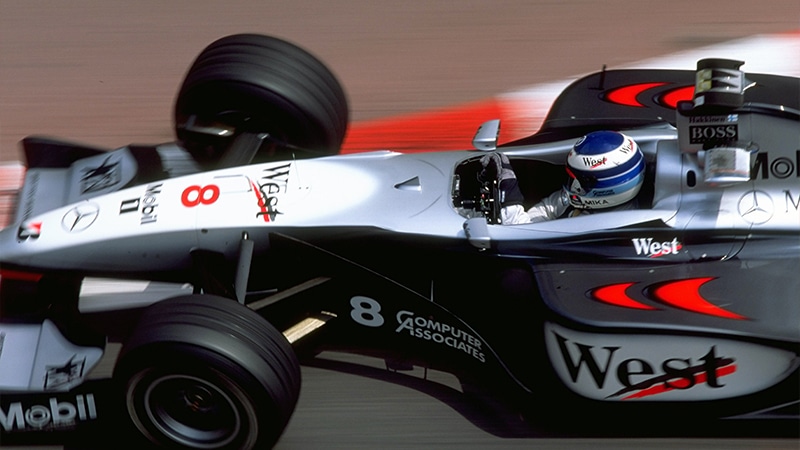So, yes, Mika and I flew to Japan together in 1998, and the reason for that was that I had managed to persuade him — and Ron — to let me join him and his then wife Erja, as well as a small posse of McLaren marketing folk, on a two-day pre-Japanese Grand Prix sojourn in Shanghai. It had two purposes: to promote McLaren’s sponsors in China and to optimise Häkkinen’s body clock for Far East time zones ahead of the Suzuka showdown.
None of us had been to China before. Almost no F1 people had. The first Chinese Grand Prix was still six years away. Big multinational corporations had begun to take notice of the world’s most populous country some years before, hence our visit, but the visible signs of Shanghai life, work and business were still a disconcertingly variegated mix. I remember having a pre-dinner drink with Mika and Erja in their 45th-floor Portman Ritz Carlton suite. He walked to the window and stared out across a sprawling vista. “It’s just like Hong Kong,” he said. It was not though, really, for, although the cityscape in front of us was dotted with skyscrapers, each topped by a vast neon emblem of Western capitalism, everything from Volkswagen to San Miguel, you only had to look down rather than across to see the universal architecture of global poverty: little shacks cobbled together out of corrugated iron and black plastic sheeting. If you are interested, China’s GDP (gross domestic product) passed US$1 trillion in 1998; it is now edging towards US$18 trillion.
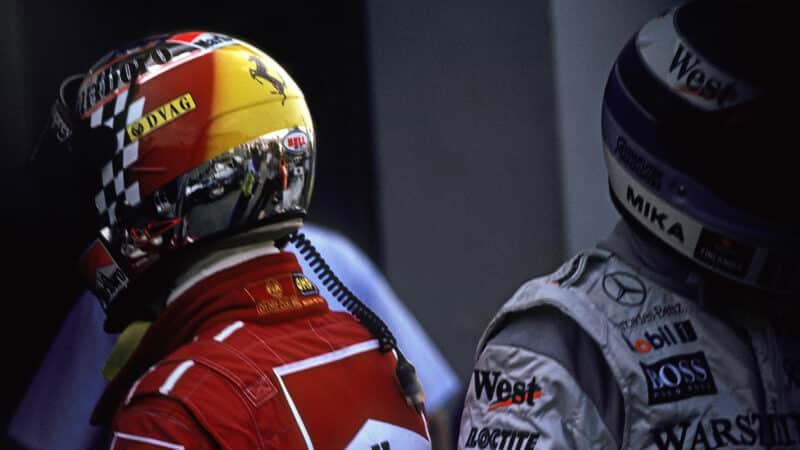
Schumacher and Häkkinen, the title rivals at Suzuka
Paul-Henri Cahier/Getty Images
When, after two days in China, we arrived in Japan, we went our separate ways. I rejoined my fellow journalists, sleeping at night at the less than plush Hotel Platon Yokkaichi, 12 miles (19km) north of Suzuka, and working by day in pitlane, paddock and press room, while Häkkinen began to focus on doing what he had flown there to do. He and Schumacher utterly dominated qualifying, Michael taking the pole, Mika just 0.178sec behind. Third and fourth were their team-mates, David Coulthard 1.025sec behind Häkkinen and Eddie Irvine 1.904sec behind Schumacher.
The next day Michael and Mika shook hands on the grid, but the atmosphere was palpably tense. The formation lap was completed, the cars took their positions, we waited, then Jarno Trulli stalled his Prost, and a restart was ordered. In that second start — calamity for Schumacher — he also stalled, which setback necessitated a third start for which he would be relegated to the back of the grid. If Häkkinen failed to score points, Schumacher could still beat him to the world championship as long as he fought his way through the field to second place or better. It was not impossible, for McLaren-Mercs were nothing like as bullet-proof then as they are now, and Schumi was Schumi. But it did not happen. Häkkinen won the race, Schumacher battled his way up to fifth, but a puncture ended his challenge on lap 32. Mika had done it.

